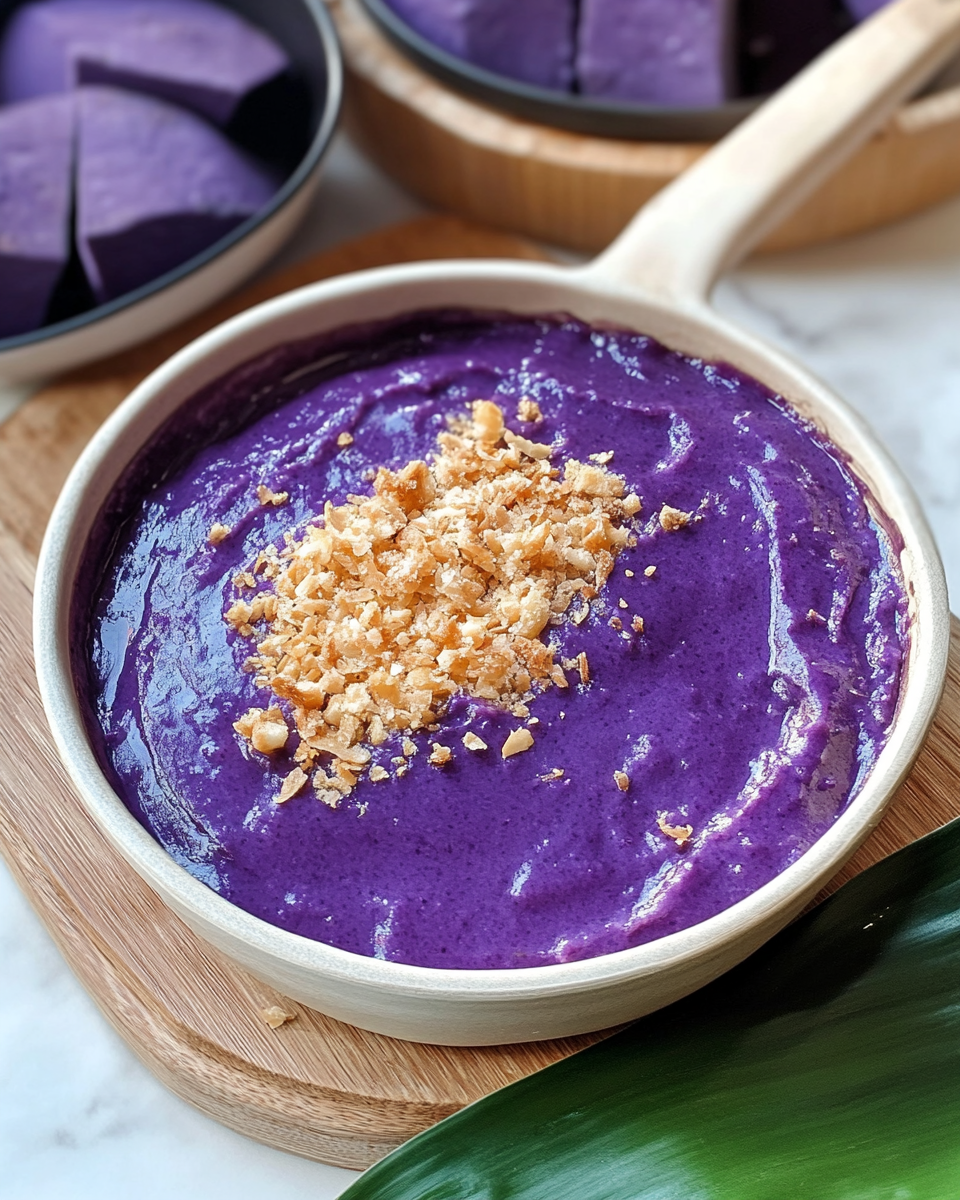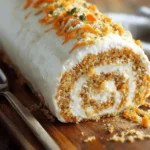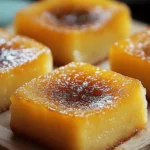Ube Halaya is a popular Filipino dessert made from purple yam. This sweet and creamy dish is perfect for special occasions or as a delightful treat. The vibrant purple color and rich flavor make it a favorite among many.
FULL RECIPE
Ingredients
- 2 cups ube (purple yam), boiled and mashed
- 1 can (14 oz) condensed milk
- 1 can (12 oz) evaporated milk
- 1/2 cup coconut milk
- 1/2 cup butter
- 1/2 cup sugar
- 1/4 teaspoon vanilla extract (optional)
Directions
- In a large pan, melt the butter over medium heat.
- Add the mashed ube and cook, stirring frequently, for about 5 minutes.
- Pour in the condensed milk, evaporated milk, and coconut milk, and mix well.
- Add the sugar and stir until the mixture thickens and becomes smooth.
- Continue stirring constantly for about 20-30 minutes to avoid burning.
- Once thickened and creamy, remove from heat and add vanilla extract, if using.
- Transfer the mixture to a serving dish and allow it to cool before serving.
Nutritional Information
- Calories: 200-250 per serving (based on a 1/4 cup serving size)
- Fat: 10-15 grams
- Carbohydrates: 30-35 grams
- Protein: 2-3 grams
- Fiber: 2-3 grams
- Sugars: 20-25 grams
History and Origin of Ube Halaya
Ube Halaya, also known as halayang ube, is a beloved traditional Filipino dessert made from purple yam (ube). Its origins trace back centuries to the Philippines, where ube has long been a staple ingredient in native cuisine. With its vibrant violet color and subtly sweet, earthy flavor, ube quickly became a favorite in both snacks and sweets. The dish gained even more refinement and popularity during the Spanish colonial era, when local cooks adapted European culinary techniques to elevate traditional recipes. Today, Ube Halaya is a cherished centerpiece at festive gatherings such as birthdays, weddings, and holiday feasts.
The Role of Ube in Filipino Cuisine
Ube holds a special place in Filipino cuisine, used in both sweet and savory dishes. Known for its eye-catching hue and naturally sweet taste, this root crop is incredibly versatile. It stars in everything from ice cream and pastries to pancakes and drinks. Yet among all its culinary uses, Ube Halaya stands out as the quintessential ube-based dessert. Its rich, creamy texture and nostalgic flavor make it a symbol of Filipino warmth and hospitality—often prepared lovingly and shared with family and friends during meaningful occasions.
Cultural Significance of Ube Halaya
Beyond its taste, Ube Halaya holds deep cultural value. In the Philippines, food is not just nourishment but also a symbol of connection and tradition. Ube Halaya is often made during special occasions, signifying abundance and celebration. Preparing it is typically a communal activity, involving hours of careful stirring over low heat—a tradition passed down through generations. This act of slow, deliberate cooking fosters moments of family bonding and storytelling, enriching the experience far beyond the dish itself.
The Health Benefits of Ube
Despite being part of a rich dessert, ube itself is packed with nutritional benefits. It’s high in antioxidants, especially anthocyanins—the same compounds that give it its deep purple hue. These antioxidants help combat oxidative stress and may reduce the risk of chronic diseases. Ube also contains essential nutrients such as vitamin C, potassium, and dietary fiber. When consumed mindfully, dishes like Ube Halaya offer a balance of indulgence and nourishment.
Modern Variations of Ube Halaya
Ube Halaya has evolved with the times, now taking center stage in fusion cuisine and gourmet desserts. Modern twists include mixing it with coconut milk, cream cheese, or even matcha for added complexity. It has become a popular base for trendy creations like ube cheesecake, ube cupcakes, and ube-filled donuts. This adaptability has helped the dessert reach global audiences while preserving its Filipino roots.
Ube Halaya and Its Connection to Filipino Festivals
A staple of Filipino holiday tables, Ube Halaya plays a central role during major celebrations like Christmas and New Year’s. It’s often part of the noche buena spread, enjoyed alongside festive favorites such as lechon and pancit. Its presence symbolizes joy, prosperity, and the Filipino spirit of togetherness. Regional festivals in places like Baguio and Quezon also feature Ube Halaya prominently, showcasing it as a cultural treasure.
The Versatility of Ube Halaya in Cooking
Ube Halaya’s uses extend far beyond being a standalone dessert. It’s a popular filling in hopia and ensaymada, a topping for sticky rice cakes like suman and bibingka, and an ingredient in layered desserts like halo-halo. Contemporary chefs even incorporate it into pancakes, waffles, and lattes. This culinary flexibility ensures Ube Halaya remains relevant across generations and cuisines.
The Importance of Quality Ube in Ube Halaya
The key to exceptional Ube Halaya lies in using high-quality ube. Fresh purple yam—firm, blemish-free, and vividly colored—offers the best flavor and texture. While frozen or powdered alternatives are available, fresh ube remains the gold standard for authenticity. The richness of the final product depends heavily on the purity and quality of its main ingredient.
Challenges in Making Ube Halaya
Creating Ube Halaya requires patience and care. One of the main challenges is the constant stirring needed to prevent the mixture from sticking or burning. Achieving the ideal creamy consistency takes time and attention. Getting the right sweetness level is equally crucial—it should enhance the ube flavor without overpowering it. Though labor-intensive, the process is often seen as a labor of love, with the reward being a silky, decadent dessert.
The Global Appeal of Ube Halaya
With the rise of global food exploration and social media trends, Ube Halaya has captured international attention. Its exotic color and distinct flavor profile make it a standout in multicultural culinary scenes. In cities like Los Angeles, Toronto, and London, ube-based desserts are now featured in cafes, bakeries, and food festivals, introducing new audiences to this Filipino favorite.
Ube Halaya in the Philippines’ Food Tourism Scene
Food tourism in the Philippines has helped elevate Ube Halaya’s profile. Destinations like Tagaytay, Baguio, and Benguet—known for their high-quality ube—offer artisanal versions of the dessert that attract tourists year-round. Visiting local markets and tasting freshly made Ube Halaya has become a must-do for food lovers exploring the country’s rich culinary landscape.
Ube Halaya as a Gift for Loved Ones
Ube Halaya also serves as a thoughtful gift, especially during holidays and special occasions. Traditionally packed in decorative jars or plastic tubs, it makes for a heartfelt and delicious present. Whether brought home from a provincial trip or given during Christmas, it’s a sweet token of appreciation and love.
The Future of Ube Halaya in Global Food Trends
As culinary trends favor visually appealing and naturally flavored desserts, Ube Halaya is well-positioned for continued success. It fits the bill for health-conscious consumers seeking alternatives to artificial coloring, and its aesthetic appeal makes it highly shareable on social media platforms. With increasing demand for global flavors, Ube Halaya may soon become a staple in international dessert menus.
Ube Halaya in Filipino Home Cooking
In many households, Ube Halaya is more than a dessert—it’s a family ritual. Passed down through generations, each family often has its own version of the recipe. The act of making it together—especially during holidays—reinforces familial bonds and cultural identity. It’s a dish made with heart, and that love is evident in every spoonful.
Ube Halaya as a Culinary Staple in Filipino Households
While commonly associated with festivities, Ube Halaya is also enjoyed in everyday settings. It’s a go-to treat for merienda (snack time) or dessert after family meals. Its simple preparation and comforting flavor make it a reliable choice, whether it’s made from scratch at home or bought from a neighborhood market.
Advertisement
The Delightful Taste of Ube Halaya
Ube Halaya’s taste is uniquely comforting—creamy, earthy, and delicately sweet. Its smooth texture and natural flavor make it both luxurious and familiar. Unlike overly sugary desserts, Ube Halaya strikes a satisfying balance, offering a taste that’s both nostalgic and indulgent. It’s best enjoyed slightly chilled or at room temperature, when the flavors are at their peak.
Conclusion
Ube Halaya is more than just a Filipino dessert—it’s a cultural legacy, a culinary comfort, and a symbol of Filipino creativity and warmth. Its enduring appeal lies in its simplicity, adaptability, and the emotions it evokes with every bite. Whether shared among family or introduced to curious palates abroad, Ube Halaya remains a proud representation of Filipino heritage—one that will continue to sweeten lives across generations and borders.






